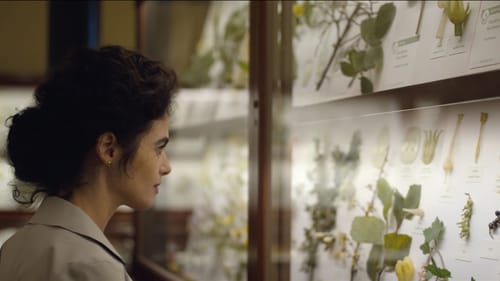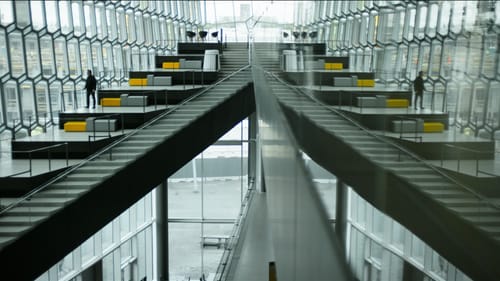Stay in the Loop
BSR publishes on a weekly schedule, with an email newsletter every Wednesday and Thursday morning. There’s no paywall, and subscribing is always free.
Inventing the future
Scott Dadich’s ‘Abstract: The Art of Design’ is streaming on Netflix

Design is in everything we see and use, yet the field and its practitioners are often hidden in plain sight. Given the underappreciated, in-the-moment ubiquity of design, it might seem paradoxical to say that a great designer creates the future, but that’s the daring thesis of Abstract: The Art of Design.
A Netflix documentary series created by Scott Dadich, Abstract is a brilliantly realized film anthology of 14 visionaries known mostly inside their fields. Its first eight-episode season was launched in 2017 to laudatory press and nominated for an Emmy Award. The second season slipped out more quietly in September 2019 (though it won the International Documentary Association’s award for Best Episodic Series), and it’s been viewed in more than 190 countries and over 30 languages.
Producer Scott Dadich, former editor of Wired and now a partner in the San Francisco design firm Godfrey Dadich, is also a designer, and that spurred him to make this series. He believes that “we all design our own lives through the thousands of decisions we make each day,” the credo that animates and motivates Abstract.
A galvanizing view
Dadich’s stable of first-rate documentarians includes Dave O’Connor of RadicalMedia and Oscar/Emmy/Grammy-winner Morgan Neville. Along with the stunning episodic content, the series concept is itself a producer’s work of art: Dadich’s vision and strong hand unites and energizes all these films.
I’m a pretty avid and experienced television viewer, but I didn’t realize what I had stumbled upon until I found myself galvanized by this panoply of gifted people. The series begins with a profile of Berliner Christoph Niemann, an illustrator, author, and graphic designer whose work includes covers of The New Yorker and The New York Times. “Illustration” is a tame word for the imaginative way in which Niemann animates the episode that profiles him.

The first season includes London-based stage designer Esmerelda “Es” Devlin (who maps light); Danish architect Bjarke Ingels (who built a building with a ski-slope roof); American automotive designer Ralph Gilles; Paula Scher (who created iconic graphics for NYC’s Public Theater); Greek/British portrait photographer Platon; and interior designer Ilse Crawford, noted for human-centered work.
An unexpected world
The second season opens with a stunning profile of Danish installation artist Olafur Eliasson, who asks the viewer to darken the room so the only illumination is the TV. He then illustrates the impact of color, pulling the watcher into his art in a way that hardly seems possible via television. Olafur has a very sophisticated philosophical artistic practice, but here—as in all these profiles—the filmmakers make heady creative ideas both approachable and inevitable.
The series continues with American Israeli designer Neri Oxman of MIT’s Media Lab; Oscar-winning American costume designer Ruth E. Carter; design-for-play toy creator Cas Holman; digital product designer Ian Spalter; and Jonathan Hoefler, typographer and creator of iconic type faces.
But by far the most surprising profile was the first season’s look at Tinker Hatfield, who began his career in architecture and used his structural training to become a design legend at Nike. There, he created Air Jordan shoes and the first cross-trainer, and—like all the profiles—this segment gives a fascinating look into an unexpected creative world.

A highlight of Abstract is its eclectic music—another area in which Dadich and company secured the best. Film composers include Timo Ellison, Brian Jones (not the Stones’s Jones), and Mark Mothersbaugh, a founder of 1970s new-wave band DEVO who is also a visual artist and designer.
Missing the media blitz
This extraordinarily high-concept series is anything but stuffy. It’s packed with the excitement of creativity and discovery. Episodes are strikingly different from one another, and (like the musical scoring) each is written and shot to stylistically complement or evoke its subject. For film experts, Dadich notes that “aside from the usual Steadicams and drones, the series uses anamorphic prime lenses mounted on a Red Epic Dragon camera shooting 4K HDR.” There you are.
Abstract is a little too, well, abstract for the usual media blitz. Its conceptual, wide-ranging content creates marketing challenges for the swift, boffo promotional style adopted by Netflix. To find the series in their huge, ever-expanding catalogue, it’s best to use the search function; even in the “documentary” section, the series doesn’t always rise to the top of the scrolled offerings.
Pre-release, Dadich asked staff at Wired (where he was still editor) to review the series, but citing conflict of interest, they declined, and so he wrote his own review in a January 2017 editorial. “Abstract will help you understand the future by seeing the intent behind the objects that surround us and the beauty in the decisions that led to them. Here is my totally nonobjective review: It’s awesome. I rate it two thumbs up, five stars, and 100 percent fresh.”
Dadich was 100 percent right. He and his team began making this series in 2015, and even five years later the episodes remain vibrant, timely, thought-provoking, inspiring, and fun.
What, When, Where
Two seasons of Abstract: The Art of Design are available to stream on Netflix.
Sign up for our newsletter
All of the week's new articles, all in one place. Sign up for the free weekly BSR newsletters, and don't miss a conversation.

 Gail Obenreder
Gail Obenreder